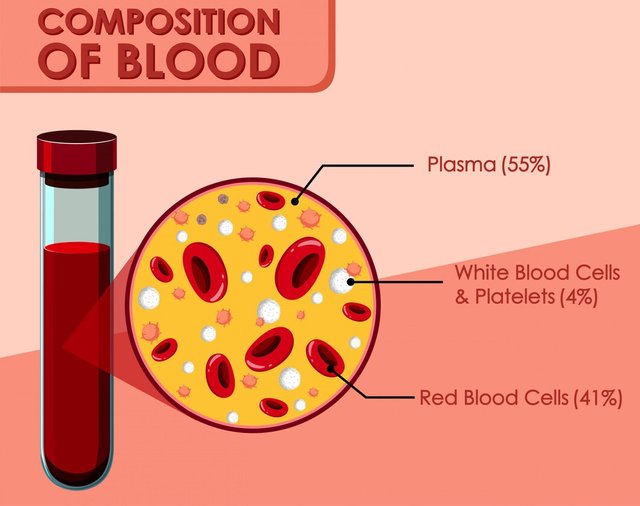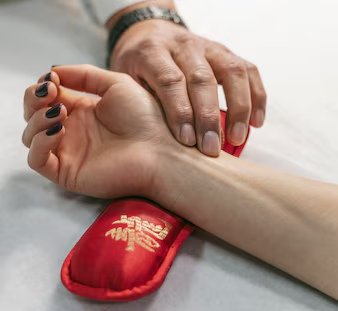Life is in the blood and as such the topic of Hematopoiesis is so important, as I gets to learn the intricate process in which our body produces blood cells, including the red blood cells, white blood cells and the platelets. All this happening primarily in the bone marrow, this dynamic process is essential for balancing our body's system, supporting immune function, and help in ensuring an adequate oxygen transport. I believe that understanding hematopoiesis is crucial for comprehending various blood disorders and developing effective treatments for them.
Anatomy And Function Of Hematopoietic Organs: |
|---|

Hematopoietic organs in our body are responsible for producing & maturating blood cells, they are very essential and The he primary site for this production is our bone marrow, here hematopoietic stem cells differentiate into different blood cell lineages, which includes the red blood cells, white blood cells, & platelets. The spleen filters our blood, removes old or damaged cells, and plays a role in immune responses. The thymus is very important for T-cell maturation, which is vital for adaptive immunity.
Additionally, lymph nodes used to facilitate the proliferation of lymphocytes during immune responses. Putting everything together, these organs maintain the function of our body's system, it regulate our blood cell levels, and protect our body against infections, ensuring the effective functioning of the circulatory and immune systems.
Medullary Hematopoiesis vs Extramedullary Hematopoiesis: |
|---|
| Medullary Hematopoiesis | Extramedullary Hematopoiesis |
|---|---|
| Is the kind of blood cells that it's formation occurs within our bone marrow. | Blood cells form outside our bone marrow, it takes place in organ like the spleen, kidney and liver. |
| It is primarily responsible for forming the red blood cells, white blood cells and the platelets throughout adulthood. | Its only produces blood in response to an increase demand for blood cells or if there's a particular pathological conditions like disorders of bone marrow or during a fatal occurrence. |
| It is primary site of hematopoiesis under normal physiological conditions. | It is the secondary site of hematopoiesis under emergency conditions. |
The truth is that both processes are very important for maintaining adequate blood cell levels, depending on our body’s needs.
Make a Diagram of Hematopoiesis And Explain It In Your Own Words: |
|---|

The above diagram shows stem cells as the source of all blood cells, the red, white and platelets.
Then we have the lineages that split into two main branches the myeloid and the lymphoid.
Under the Myeloid Lineage:
- We have the:
- Erythrocytes (red blood cells)
- Platelets (from megakaryocytes) and the
- Myeloblasts (which develop into neutrophils, eosinophils, basophils, and monocytes).
- We have the:
In Lymphoid Lineage:
- We have the:
- B Lymphocytes (which mature into plasma cells) and the
- T Lymphocytes (which include helper and cytotoxic T cells) and lastly,
- Natural Killer (NK) Cells.
- We have the:
Explanation of Hematopoiesis: |
|---|
Hematopoiesis is the process in which our body produces blood cells. It begins with hematopoietic stem cells in our bone marrow, the stem cells then develop into two main types of cells: myeloid and lymphoid.
Myeloid lineage cells are responsible for transportation of oxygen (erythrocytes), clotting (platelets), and immune response (white blood cells).
While the Lymphoid lineage Are cells that plays the crucial roles in the adaptive immune system, with B cells & this cells produces antibodies and also the T cells which are responsible for attacking infected or cancerous cells.
All this process is very important for maintaining a healthy blood cells count and ensuring that our bodies have the ability to fight infection and respond to other challenges. Hematopoiesis is not a one time something but it is a continuous cycle because the old or damaged cells are replaced regularly by the new ones produced in our bone marrow.
Reasons for Significant Blood Loss: |
|---|
In this case, I think the reasons for significant blood loss include the trauma to various organs the patient experiences due to the collision of the car crash, and the force impact can cause major blood vessels to rupture, leading to internal bleeding. Additionally, external injuries like abrasions and lacerations can contribute to significant blood loss.
Another primary reason for the loss of blood is that she had a fractured femur, & a broken femur often involves significant soft tissue damage & can lead to either internal or external bleeding. As I said before, lacerations or abrasions can cause bleeding, so if the patient sustained cuts or scrapes during the crash, these could result in external blood loss.
Internal Injuries: There may be damage to internal organs (such as the liver, spleen, or kidneys), which would not be visible externally but can result in internal bleeding, so an x-ray shows she has kidney problems.
An Ideal Blood Donor: |
|---|

I think the ideal person to donate blood to this patient would be a compatible blood type donor whose health status is good. It must have the same blood type as the patient or should be a universal donor (type O - negative) to ensure compatibility for transfusion (the rhesus factor + or - that comes with blood type must be considered) because it's only a person with O negative type of blood that can transfuse to any other person with different blood type without any complications.
The Donor must be healthy and free from infections to minimize the risk of transmitting any pathogens to the recipient, Or any bad conditions that might affect the quality of blood. The donor should not have engaged in any activities ( such as recent surgery or illness) that could affect his/her health or lead to complications.
The donor should be over 18 years old and must meet the minimum weight requirement for safe blood donation.
If the donor meets all these criteria then she/he would help support the patient in recovering from blood loss due to the trauma sustained in the accident
In summary, hematopoiesis is a vital physiological proces, it sustains our body's blood supply and not only this it plays a critical role in protecting us against diseases. Getting to know this complex mechanism have a great impact for medicine especially in treating hematological disorders and improving regenerative therapies, it also contributes to enhancing health outcomes.
Free pixel images of Hematopoiesis
Upvoted. Thank You for sending some of your rewards to @null. It will make Steem stronger.
Downvoting a post can decrease pending rewards and make it less visible. Common reasons:
Submit
Hola 👋 , estoy encantada.con el enfoque práctico de tu explicación sobre este tema que bien como lo dices la vida está en la sangre.
Tu diafragma me gustó es muy didáctico..
Deseo lo mejor para tí..
Éxitos 😇
Downvoting a post can decrease pending rewards and make it less visible. Common reasons:
Submit
Awe 🥰 thank you so much, dear, I'm glad that you understand my explanations. I was just writing it in a way that I understand the topic because this is not my field. Thank you for the good wishes!
Downvoting a post can decrease pending rewards and make it less visible. Common reasons:
Submit
Congratulations!
Your post has been upvoted by @steemladies.
The community where the Steemian ladies can be free to express themselves, be creative, learn from each other, and give support to their fellow lady Steemians.
Manually curated by liasteem for Steem For Ladies
Downvoting a post can decrease pending rewards and make it less visible. Common reasons:
Submit
Es increíble saber cómo distintas partes de nuestro cuerpo tienen la responsabiilidad de producir células sanguíneas conforme a la etapa de crecimiento, siendo la médula ósea la que mayor actividad tiene en la etapa adulta.
Es importante asegurarse de la compatibilidad al momento de las transfusiones de sangre.
Éxitos en tu participación.
Downvoting a post can decrease pending rewards and make it less visible. Common reasons:
Submit
Hi, friend, thank you so much for visiting me today; indeed, God is great; he wonderfully made us and desires us to live forever, which is why he took his time to create us this way.
Downvoting a post can decrease pending rewards and make it less visible. Common reasons:
Submit